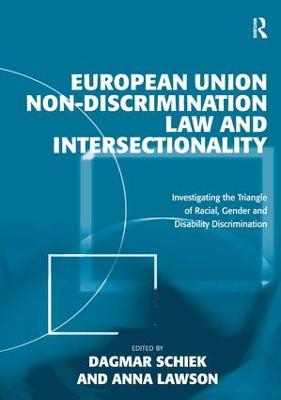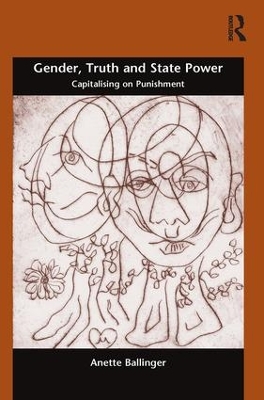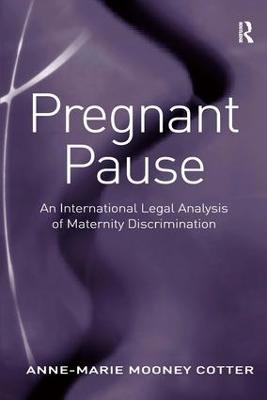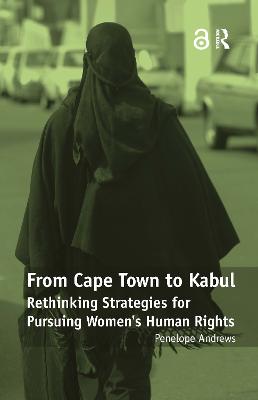European Union Non-Discrimination Law and Intersectionality
 -15%
portes grátis
-15%
portes grátis
European Union Non-Discrimination Law and Intersectionality
Investigating the Triangle of Racial, Gender and Disability Discrimination
Schiek, Dagmar; Lawson, Anna
Taylor & Francis Ltd
02/2011
340
Dura
Inglês
9780754679806
15 a 20 dias
790
Descrição não disponível.
Contents: Preface; Introduction, Dagmar Schiek and Anna Lawson; Part I Discrimination Grounds and Intersectionality: A Reappraisal: Organising EU equality law around the nodes of 'race', gender and disability, Dagmar Schiek; Intersections between disability, race and gender in discrimination law, Theresia Degener; Disadvantage at the intersection of race and disability: key challenges for EU non-discrimination law, Anna Lawson; Tackling the conceptual order of multiple discrimination: situating different and difficult genealogies of race and ethnicity, Ulrike M. Vieten. Part II Tackling Intersectionality at National Levels: Women with disability in Turkey and France, Ayse Idil Aybars; Promises of an intersectional approach in practice? The Dutch Equal Treatment Commission's case law, Susanne Burri; Intersectional discrimination and the underlying assumptions in the French and German headscarf debates: an adequate legal response?, Stephanie Fehr; The status of Muslim minority women in Greece: second class European citizens?, Stergios Kofinis; Minorities' right to day care: liberal tolerance or identity maintenance?, KevA?t Nousiainen; Justice for the whole person: the UK's partial success story, Gay Moon. Part III Convincing the Judiciary to Entertain Intersectional Analysis: Identity-based discrimination and the barriers to complexity, Suzanne B. Goldberg; The assimilationist anti-discrimination paradigm and the immigrant Muslim woman: suggestions on how to re-conceptualise discrimination claims, Lynn Roseberry; A legal remedy for corpulent women of colour, Iyiola Solanke. Part IV Intersections Between Gender, 'Race' and Disability from EU Perspectives: Gendered experiences of racial discrimination: comparative socio-legal research, Isabelle Carles, Erica Howard and Eleonore Kofman; EU non-discrimination law and policies in reaction to intersectional discrimination against Roma women in Central and Eastern Europe, Kristina KoldinskA!; Intersectionality in EU law: a critical reappraisal, Dagmar Schiek and Jule Mulder; Bibliography; Index.
Este título pertence ao(s) assunto(s) indicados(s). Para ver outros títulos clique no assunto desejado.
multiple;ground;indirect;employment;framework;directive;dutch;equal;treatment;commission;CEDAW Committee;CERD Committee;CEDAW Report;CEDAW Convention;ECR I-1757;Young Men;Intersectional Discrimination;Multiple Discrimination;CRPD.;EU Law;Romani Women;ICESCR Committee;Employment Framework Directive;Intersectional Disadvantage;Race Equality Directive;CEDAW;Nondiscrimination Law;European Union Non-Discrimination Law;Single Ground Approach;Non-discrimination Law;Dress Code Cases;Single Equality Bodies;Roma Women;Assimilationist Paradigm;Discrimination Grounds
Contents: Preface; Introduction, Dagmar Schiek and Anna Lawson; Part I Discrimination Grounds and Intersectionality: A Reappraisal: Organising EU equality law around the nodes of 'race', gender and disability, Dagmar Schiek; Intersections between disability, race and gender in discrimination law, Theresia Degener; Disadvantage at the intersection of race and disability: key challenges for EU non-discrimination law, Anna Lawson; Tackling the conceptual order of multiple discrimination: situating different and difficult genealogies of race and ethnicity, Ulrike M. Vieten. Part II Tackling Intersectionality at National Levels: Women with disability in Turkey and France, Ayse Idil Aybars; Promises of an intersectional approach in practice? The Dutch Equal Treatment Commission's case law, Susanne Burri; Intersectional discrimination and the underlying assumptions in the French and German headscarf debates: an adequate legal response?, Stephanie Fehr; The status of Muslim minority women in Greece: second class European citizens?, Stergios Kofinis; Minorities' right to day care: liberal tolerance or identity maintenance?, KevA?t Nousiainen; Justice for the whole person: the UK's partial success story, Gay Moon. Part III Convincing the Judiciary to Entertain Intersectional Analysis: Identity-based discrimination and the barriers to complexity, Suzanne B. Goldberg; The assimilationist anti-discrimination paradigm and the immigrant Muslim woman: suggestions on how to re-conceptualise discrimination claims, Lynn Roseberry; A legal remedy for corpulent women of colour, Iyiola Solanke. Part IV Intersections Between Gender, 'Race' and Disability from EU Perspectives: Gendered experiences of racial discrimination: comparative socio-legal research, Isabelle Carles, Erica Howard and Eleonore Kofman; EU non-discrimination law and policies in reaction to intersectional discrimination against Roma women in Central and Eastern Europe, Kristina KoldinskA!; Intersectionality in EU law: a critical reappraisal, Dagmar Schiek and Jule Mulder; Bibliography; Index.
Este título pertence ao(s) assunto(s) indicados(s). Para ver outros títulos clique no assunto desejado.
multiple;ground;indirect;employment;framework;directive;dutch;equal;treatment;commission;CEDAW Committee;CERD Committee;CEDAW Report;CEDAW Convention;ECR I-1757;Young Men;Intersectional Discrimination;Multiple Discrimination;CRPD.;EU Law;Romani Women;ICESCR Committee;Employment Framework Directive;Intersectional Disadvantage;Race Equality Directive;CEDAW;Nondiscrimination Law;European Union Non-Discrimination Law;Single Ground Approach;Non-discrimination Law;Dress Code Cases;Single Equality Bodies;Roma Women;Assimilationist Paradigm;Discrimination Grounds







